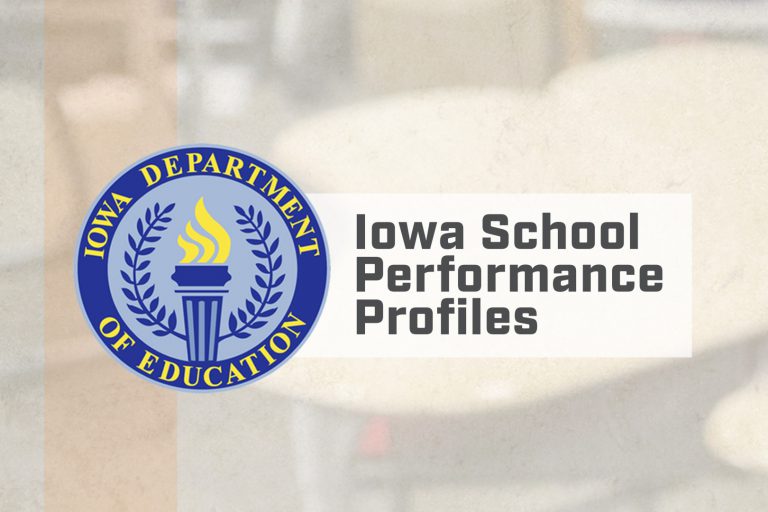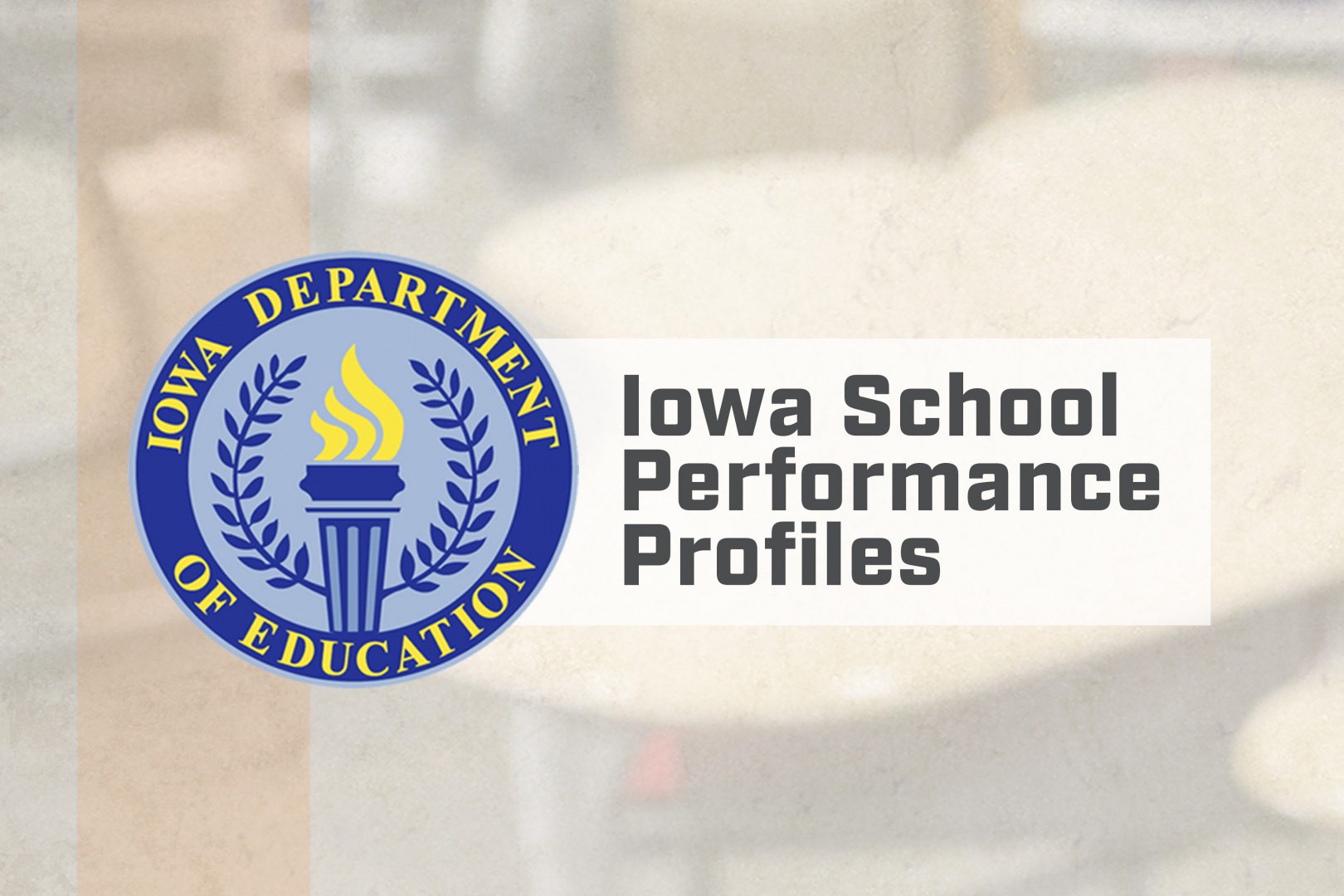

Iowa Department of Education releases Iowa School Performance Profiles

On January 29, 2020, the Iowa Department of Education released updates to its online school accountability reporting system called the Iowa School Performance Profiles. The website shows how schools are performing on multiple measures and meets federal and state requirements for publishing report cards.
The Iowa School Performance Profiles include scores and ratings on a set of accountability measures, such as student growth and graduation rate, and additional data that are required by law but do not count toward school accountability scores. New to the 2020 profiles are updated school scores and ratings, post-secondary readiness is now factored in accountability, and the scores include performance on the new state test, the Iowa Statewide Assessment of Student Progress (ISASP). The website also specifies schools that have been identified for additional support and improvement based on their performance.
Report cards provide an overall view of school performance as well as more detailed information. The overall performance includes both an overall score and performance rating for all Iowa schools across a number of performance measures. The rating categories include Exceptional, High Performing, Commendable, Acceptable, Needs Improvement, and Priority. The overall score provides a single number which is the sum of the measures. The Department of Education notes that the rating category “provides a snapshot of school performance, but may not tell the entire story about performance of students in that school.” In addition to the overall rating, the Every Student Succeeds Act (ESSA) performance category identifies schools that are struggling or who have student groups who are underperforming.
How the Ames District Performed
The Ames Community School District scored at or above the state average on a number of key indicators. Some of those include graduation rate, percent proficient in math and reading, and post-secondary readiness based on ACT or SAT participation and success. Despite this, on the accountability ratings, each building within the District moved down one or more performance categories, with one building in the Priority category. Targeted status means that index scores for specific subgroups in those schools fell within the bottom 5% of schools. Across the District, one area that consistently scored below the state average is the average student growth percentile in reading and mathematics on ISASP.
To access the Iowa School Performance Profiles, visit www.iaschoolperformance.gov.
What happens next?
As a District, we continue to dive into our data at both the District and building level and are committed to addressing gaps through systematic change in a number of key areas. One of those areas is a commitment to teaching to the Iowa standards. This will be addressed partly through the introduction of an instructional framework to teachers and engaging in a robust curriculum review process that puts state standards at the forefront of decision-making. The Iowa Department of Education strongly encourages school districts across the state to implement an instructional framework and this is a key component that is not currently developed in the Ames Community School District. This past semester, administrators engaged in a process that determined an instructional framework with implementation beginning later this year.
We need to also continue to reach all students through the implementation of core curricular materials and how we reinforce student behaviors. Reading Units of Study and Wilson FUNdations make up the core curricular instructional materials for reading that are utilized in each classroom in elementary buildings. Positive Behavior Interventions and Supports (PBIS) is a school-wide framework that focuses on the positive things that students are doing that is being implemented at all buildings.
Regardless of the overall score, all buildings in the District will engage in a data-review process in preparation for a Self Assessment of MTSS Implementation (SAMI). This data-review will be District and building led with the SAMI Evaluation led by Heartland Area Education Agency (AEA). Buildings will also develop and submit action plans to the District in collaboration with the AEA.